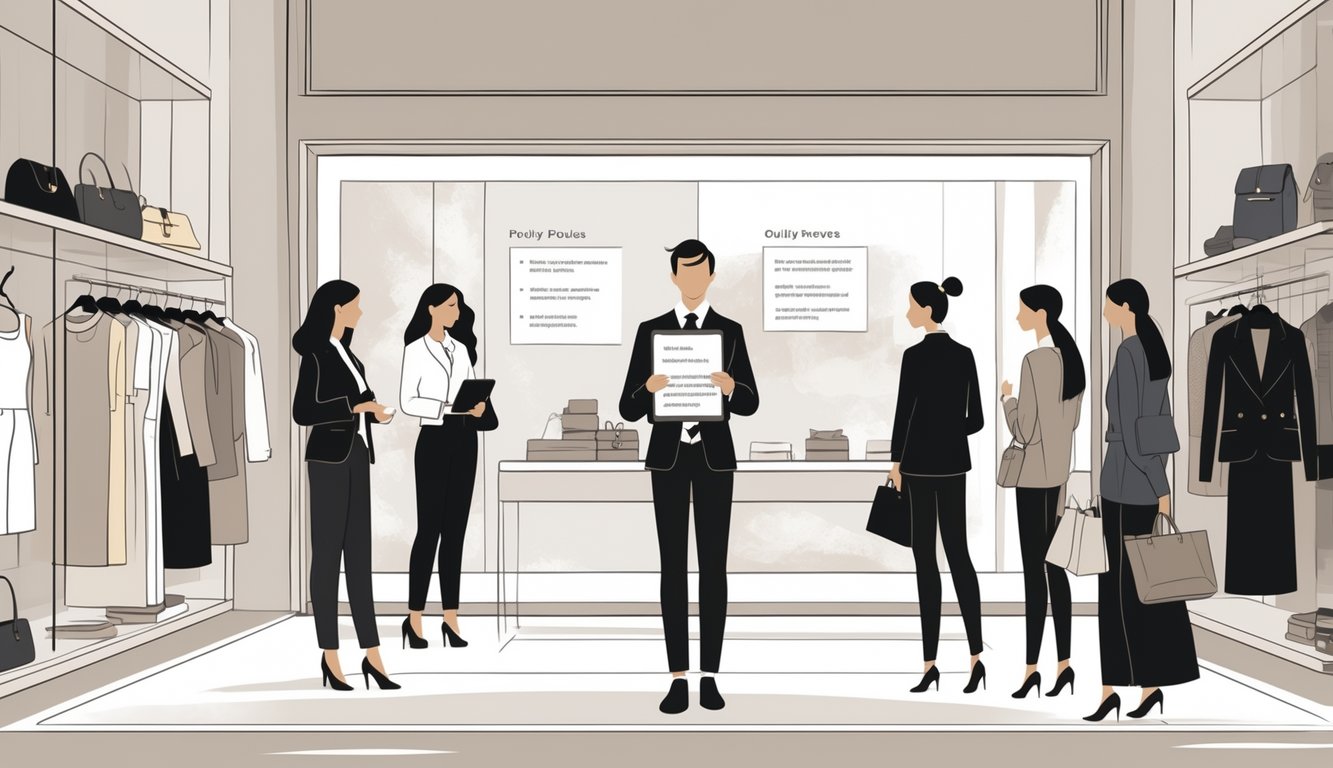
Key Takeaways for Shoppers and Retailers
I keep spotting new restrictions—denim jackets, designer dresses, whatever—and it’s not because stores are sentimental about their cardigans. “Wardrobing” is on their radar now. Forter claims 68% of shoppers admit lenient policies are easy to abuse, which is wild, because who actually tracks all those receipts? Now, retailers target “serial returners,” people with a 79% annual return rate, sometimes dropping $1400+ on stuff they return or resell—sounds fake, but ABC News says it’s real (see for yourself).
People act like free returns are a right, but e-commerce returns spiked 95% and now brands like Nordstrom and Amazon are like, “Yeah, no, not forever.” Ten percent of online returns get donated or incinerated, which is nuts—imagine a mountain of unwanted ballet flats going up in smoke. Vogue Business did a whole thing on it, and honestly, what’s worse: the cost, or the idea of pre-owned swimwear getting “refreshed” and resold (seriously, look)?
Heads up: get flagged as an abuser and your returns might get blocked before you even notice. Keep your “try before you buy” experiments reasonable. Never trust the advertised window—brands change those constantly, hiding updates in the checkout flow.
| Change | Shopper Impact | Retailer Goal |
|---|---|---|
| Shorter time windows | Decision panic | Lower handling/logistics costs |
| Restocking fees | Extra cost, less tempting | Offset higher returns volume |
| Tracking return rates | Account flagged/blocked | Deter wardrobing and abuse |
| Fewer free returns | Pay to return | Cut environmental impact |
If I get one more “policy update” email, I’m just wearing my “trial period” blazer inside forever.
Frequently Asked Questions
Boots echoing on the floor, three emails about return policies before I’ve even finished my second coffee. Apparently, these updates touch everything—timelines, refunds, whether you can return that cropped blazer you impulse-bought online.
What are the new return policy changes implemented by major fashion retailers?
Gone are the “no questions asked” days. Zara now blasts me with “post returns cost extra” at checkout, but in-store returns are still free. H&M? Pretty much the same. American Eagle, Saks, Urban Outfitters, TJ Maxx—they’re all tacking on fees, anywhere from $2.99 to $10.99, for mailing things back (Vogue Business has the list). Why do I only find out after I’ve already opened the box?
Why have some fashion brands decided to alter their return policies recently?
Anyone else remember sending jeans back after wearing them twice because the zipper was weird? Now, almost 70% of people apparently think lenient returns are just begging for abuse (USA TODAY survey). Brands say returns cost too much, so they’re tightening up to slow down serial returners (or at least make it more annoying).
Can you provide details on how the recent return policy updates affect online shoppers?
Try figuring out if you need a postmarked label or a QR code, and which pile of receipts goes with which skirt. Online-only returns sting more—shipping takes longer, windows shrink, and now you pay a fee every time. My friend Jen gave up after Urban Outfitters shrank their free return window and started warning about “wear and wash” abuse.
What steps are being taken by companies to prevent the misuse of online return policies?
Fraud detection isn’t just a buzzword—Zara and others use algorithms to flag serial returners. They might limit your account or send a “friendly” warning (been there). Everyone’s quietly tracking patterns—like, “why does this person return every other A-line dress?” A customer service rep once told me their system’s more advanced than some banks. I just wanted to swap a size.
Are there significant differences in return policies between in-store and online purchases?
Literally last week, I bought something in-store: no shipping fee, instant refund. Order the same thing online? Suddenly there’s a return clock and a deduction. Brands hope nobody notices, or maybe they want to make it just annoying enough to cut returns. Not everyone can drop by a flagship store on lunch. Should I really have to drive 90 minutes just to avoid a $5 label?
How might changes to return policies impact the relationship between retailers and consumers?
Okay, so let’s just say I’m not the only one side-eyeing these new return policies—like, does anyone actually read the fine print before buying jeans online? Because I sure don’t. And then I get burned. Sizing’s a mess (especially if you’re plus-size or, I don’t know, shaped like a garden gnome), and suddenly there’s a fee for sending back the stuff that doesn’t fit. Did anyone ask for this? Fast Company’s got a whole thing on how people are just… not happy (Fast Company research), which, yeah, obviously. My group chat is basically screenshots of return policy updates and people ranting about how it feels like stores are daring you to hate your purchase. Every time I see a new fee, my trust in these places just nosedives. I hesitate way more before impulse buying, because who wants to gamble on losing shipping money or wasting a Saturday in the returns line? Shopping used to feel fun. Now it’s kind of a hassle.



